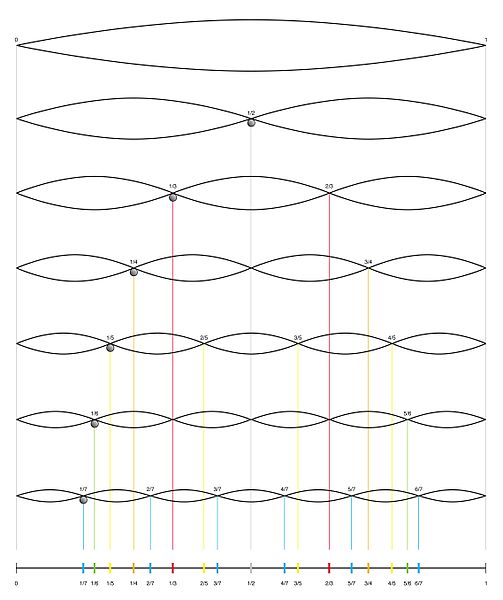Tonality
Tonality is characteristic of all kinds
of music, and, though dubstep is predominantly percussion
based, it does not lack its fair amount of differing
pitches. What sets dubstep apart, however, is that it
leans heavily away from the main-stream timbre standard of
staying mostly in major keys. Much of the tension and
emotion expressed and caused by dubstep music can be
attributed to the widespread usage of minor keys in its
making.
Minor Keys
The difference between major keys and minor keys is found primarily in the implementation of either consonance or dissonance. The difference between the two can be clearly heard.
Consonant and Dissonant Music
http://youtu.be/b1Ph0sa0Gc0
Consonance
The definition of
consonance, as seen in music theory, is somewhat relative
because the Balkans, Arabians and even the Chinese do not
follow the same definition as the traditional Western
culture. Being in the Western culture, the simple
definition states a consonance is "a stable tone
combination..." and consonances are points of arrival, rest
and resolution" in tonality. [3]
These are the defining features of the major keys.
All sound waves involve sinusoidal waves that vibrate at
certain frequencies. The frequency at which an entire
sound wave vibrates is called the fundamental
frequency. There are additional components that
contribute to the sound a wave emulates called the
overtones. These vibrate at frequencies above that of
the fundamental frequency. Together, the fundamental
and the overtones form the total sound wave, each
individually being called partials. When the overtones
form sinusoidal waves that are "perfect integer multiples"
of the fundamental partial of the same wave, this is called
harmonics. As seen below:

Image URL:
http://commons.wikimedia.org/wiki/File:Moodswingerscale.jpg
It is the usage of these perfect multiples that gives major
keys the impression of being more stable, restful and even
happier than musical compositions in minor keys.
Dissonance
Dissonance is, by definition, the
remaining spectrum of tonality that is not consonant.
Dissonant timbre consists of unstable tone combinations and
unresolved, transitional tonality. Dissonance creates a
"tension" that "demands an onward motion to a stable
chord. Thus, dissonant chords are 'active',
traditionally they have been considered harsh and have
expressed pain, grief and conflict." [3] The presence of
dissonance characteristic of the minors and minor keys in
music theory can be seen, very clearly in the definition of
differing chords in the form of a triad. The classic
triad, that of a major form, is the simple combination of the
1st, 3rd and 5th harmonies of the root note. The minor
of that some chord structure shifts the simple 3rd harmony to
a flat 3rd dissonance, as seen below.
Kinds of Triads
| Root |
3rd |
5th |
|
| major |
1 |
3 |
5 |
| minor |
1 |
b3 |
5 |
The common characteristic of dubstep that
makes it "grungy" and "rough" while not sacrificing the
ability to activate its listeners is this very concept of
dissonance. The "need" for resolution and rest is the
driving force behind the musical structure and is one of the
underlying features that makes the beats so compelling.
Visit the other pages:
Home Page
Rhythm
The Wobble
The Drop
Bibliography
Image URL:
http://www.filthy-glamour.com/category/uncategorized/